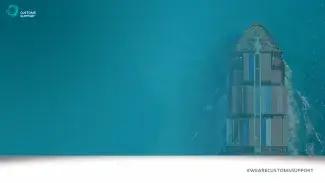What is the Target Operating Model?
The UK Target Operating Model is an initiative within and alongside the 2025 UK Border Strategy which focuses on aligning trade protocols for importing goods from within the EU and globally. There is currently a misalignment due to the need to keep trade simple in the aftermath of Brexit.
To reduce the impact on traders, the TOM is being introduced in three phases. The first has been in effect since the 31st of January 2024, and the second and third are expected at the end of April and October respectively.
(Related: New rules for food and feed of non-animal origin from 7th March – separate to TOM milestones)
The first phase introduced health certification requirements for medium-risk animal products, plants, plant products and high-risk food and feed of non-animal origin from the EU. You can read about the import rules for the different TOM categories here.
Advice from DEFRA following frequent errors with new sample health checks
Following the introduction of the first changes, the Department for Environment, Food, and Rural Affairs (DEFRA) has released information on the common errors that traders are experiencing with the new rules.
Beware of the following simple errors that could delay your goods at the border:
No commercial documentation accompanying low-risk consignments
Although low-risk goods do not require a health certificate, the relevant commercial documents must accompany the shipment.
At a minimum, your goods must be accompanied by documents which include:
- A description of the goods, with volume or quantity information. A copy of the food label may also be accepted with a quantity.
- The name and address of the origin.
- The name and address of the destination.
- A reference for lot, batch, or consignment.
- Date of dispatch.
- Name and address of the carrier, along with details of the transport.
To check if you require further documents to accompany your goods, contact us for assistance.
Multiple health certificates on one import notification
Every health certificate should be attached to a single import notification. If you have multiple health certificates on one load, then you should be submitting multiple import notifications.
Incorrect classification of composites
All composite products from the EU and EFTA states are classified as low-risk or exempt from TOM risk categories. Since the introduction of the first phase of checks, many products are being incorrectly classified as composites when they are not, and therefore warrant a higher risk category.
To check if your good qualify as composite, contact us for assistance.
Import notification errors
EU address provided for operator responsible
The operator responsible is the UK person who submits declarations as the importer on behalf of the importer. This should be a UK person and address, not the shipper or carrier.
No establishment of origin in the Common Health Entry Document (CHED)
Please complete this field when submitting your CHED.
IUU Catch Certificate being uploaded to IPAFFS instead of being sent to BCP
It is a requirement to send your IUU Catch Certificate directly to the Port Health Authority for your port of entry. This will not change until the 30th April, when you should then attach your IUU notification to your IPAFFs notification.
Please also check that your fish enters the UK through a port with a Border Control Post (BCP) which is equipped to examine fish in case of physical inspection.
Export Health Certificate errors
Attestation incorrectly deleted
Check that attestations are correctly completed as per the “notes for completion” on the model certificate and that non-applicable fields are deleted or omitted accordingly.
If you are making amendments or deletions by hand, these must be initialled and stamped.
For electronic submissions, a stamp and signature per page of a verifiable PDF is acceptable.
Incorrect model certificate provided
Competent EU authorities must provide their own version of the model certificate which is available for reference on .gov.uk, including all the information that the model shows an example of.
If your products are of medium–high risk and there is no model certificate available, you may require an import licence or permit to import. Seek further guidance instead of assuming another model certificate will be acceptable.
Signature and numbering errors
Every page of your certificate must be sequentially numbered, stamped, and signed. If your certificate is digital, then a valid digital signature must be used.
No regional code advised
If applicable, you must include the correct regionalisation code on your Health Certificate.
From April, you may be fined for noncompliance
At this stage, DEFRA is only providing feedback if there are errors with your paperwork. However, it is important to rectify these issues as soon as possible to ensure that you avoid fines and delays at the border.
If you would like a customs health check or further advice on the changes coming with the Target Operating Model, contact us for assistance today.














